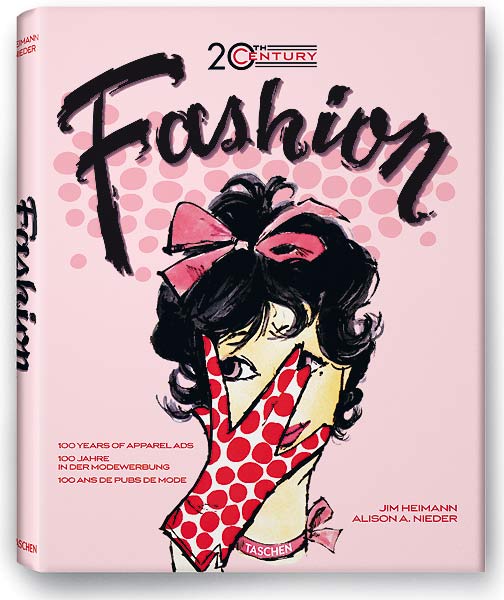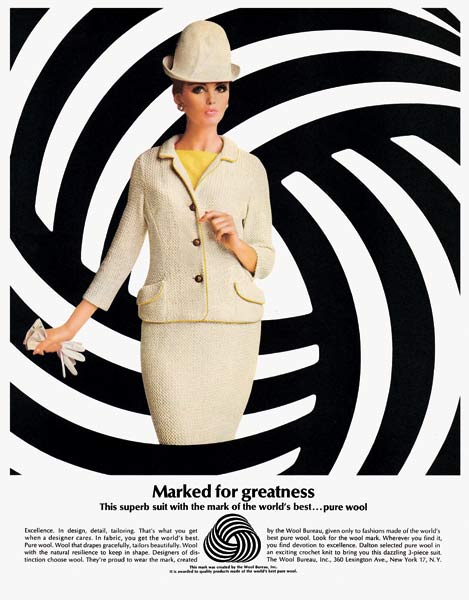
beautyme collections culture cuisine motor music search
 20th Century Fashion: 100 Years of Apparel Ads
20th Century Fashion: 100 Years of Apparel Ads
by author
Alison A. Nieder, editor Jim Heimann
published by Taschen
Release date: 29 June 2009
Culture that comes
from the people
The individualisation of taste began in times of pop-culture
Author Alison A. Nieder, executive editor of the fashion trade publication California Apparel News, and Taschen America editor Jim Heimann guide in the new publication through the history of fashion advertising during the 20th-century.
fig.: Cover '20th Century Fashion: 100 Years of Apparel Ads' by author Alison A. Nieder, editor Jim Heimann; published by Taschen (June 2009). German, English and French edition; hardcover, 23.8 x 30.2 cm, 464 pages.
Alisan A. Nieder, who works in retail, apparel production, and as a journalist since 1985, gives an insight into the evolution of the fashion business from the exclusive Parisian salon over the boutiques to the global industry and the simultaneously faster changing trends.
Author Alison A. Nieder and the cultural anthropologist Jim Heimann offer a retrospective of the last hundred years via 400 fashion advertisements from Jim Heimann's own collection. Through the illustrated timeline with details on style-makers and trend-setters they are showing how the historic events, design houses, retailers, films, magazines, and celebrities shaped the way the society dressed.
 You will find out that fashion was in the early years - in times of Charles Frederick Worth (around 1870) - the cultural expression of a wealthy elite.
You will find out that fashion was in the early years - in times of Charles Frederick Worth (around 1870) - the cultural expression of a wealthy elite.
From the 19th century it was a long way until pop-culture (popular culture, popular comes from 'populus', from the 'people') breaks through in the 60ies/70ies. The democratisation of fashion was enabled by affordable clothes. The masses had for the first time the chance to join the fashion 'circus'. Fashion became an instrument for new elites to express an individual view on culture; simultaneously the individualisation of taste began.
Many various labels replaced the relative static and few signs used by the former elites and began to structure our experience of ourselves and others.
Brand involvement
fig.:
Wool Bureau/Dalton of America, 1964. Copyright: Courtesy TASCHEN.
The graphical integration of the label into the advert shows the new importance of the 'brand' for the communicative impact of fashion - especially the sociological aspect of belonging to a group that can be chosen by the wearer as an individual. The involvement into communities of preferences started to go over geographical borders. The globalisation of conformity was born.
After this fashion revolution in the 60ies/70ies, the consumers trained their behaviour of selecting after personal taste. Today, they play - mostly unconscious - an important part in the development of fashion trends.
The book is available online www.taschen.com.
more culture>>>